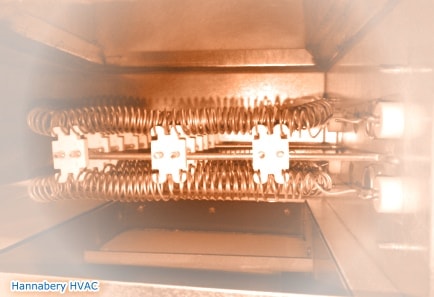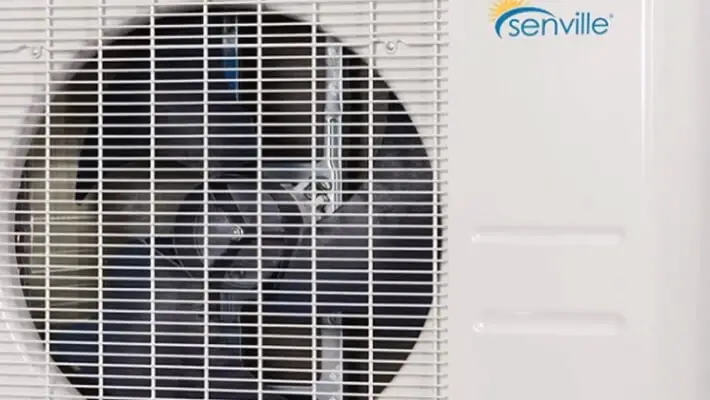| Note: This article may contain affiliate links, which means if you make a purchase following our links won’t cost you extra, but we may earn a commission. Learn more |
A heat pump is a great way to save money on your energy bill, but there are times when you may need to switch to emergency heat. Here are a few things to consider when deciding if you should switch your heat pump to emergency heat.
The first thing you need to consider is the temperature outside. If it is below freezing, your heat pump will have to work harder to keep your home warm. This can cause the system to overheat and break down. If this happens, you will need to switch to emergency heat.
Another thing to consider is the condition of your heat pump. If it is old or not working properly, it may not be able to handle the extra workload. In this case, switching to emergency heat can prevent further damage to your system.
If you are still not sure whether or not you should switch your heat pump to emergency heat, consult with a professional. They can help you make the best decision for your situation.
If you live in an area with very cold winters, you may be wondering when you should switch your heat pump to emergency heat. Here are a few things to consider:
1. If the temperature outside is below freezing and your heat pump isn’t keeping up with the demand, it’s time to switch to emergency heat.
2. If you have an older model heat pump, it may not be as efficient in very cold weather. In this case, it’s also best to switch to emergency heat.
3. If you simply want your home to be warmer during the winter months, switching to emergency heat will give you the best results.
Keep in mind that using emergency heat can cause your energy bills to increase, so only use it when absolutely necessary. When in doubt, consult with a professional HVAC contractor who can help you make the best decision for your situation.
What Temp Should Heat Pump Switch to Emergency Heat?
If your heat pump is set to automatically switch to emergency heat when the temperature outside drops below a certain point, that point is typically between 35 and 40 degrees Fahrenheit. However, you can manually switch your heat pump to emergency heat at any time.
Should I Switch My Heat Pump to Emergency Heat During Ice Storm?

If you live in an area that is prone to ice storms, you may be wondering if you should switch your heat pump to emergency heat during an ice storm. Here are a few things to consider:
1. The first thing you need to do is check the weather forecast. If there is a chance of an ice storm, it’s generally best to switch your heat pump to emergency heat before the storm hits. This way, you can avoid any potential damage to your heat pump from the ice and also ensure that your home stays warm during the storm.
2. However, there are some exceptions to this rule. If the temperature is expected to stay above freezing during the entire storm, then you likely don’t need to worry about switching your heat pump over to emergency heat. Additionally, if you have a backup heating system in place (such as a furnace), then you may not need to switch your heat pump at all – just let your backup system take care of the heating while the ice storm passes through.
3. Ultimately, it’s up to you whether or not you want to switch your heat pump to emergency heat during an ice storm – just be sure to weigh all of the factors involved before making a decision.
Is It Better to Run a Heat Pump on Emergency Heat?
If your heat pump is running on emergency heat, it’s likely because there’s an issue with the outdoor unit. Maybe the fan isn’t working or there could be a problem with the compressor. Whatever the case, it’s not advisable to keep running your heat pump on emergency heat for too long.
Emergency heat is designed to be a short-term solution until you can get your regular heating system up and running again. It uses more energy than regular operation, so you’ll see a spike in your energy bills if you keep it running for extended periods of time. Additionally, running your heat pump on emergency heat can cause additional wear and tear on the system, which could lead to costly repairs down the road.
If your heat pump is having issues and you need to use emergency heat, try to get the problem fixed as soon as possible. In the meantime, make sure to monitor your energy usage and watch for any unusual spikes in temperature inside your home.
Does Emergency Heat Cost More?
If you have an emergency heat setting on your thermostat, it could be costing you more money on your energy bill. The emergency heat setting is typically used when the regular heating system is not working and the home is starting to get cold. This setting will turn on the backup heat source, which is usually an electric resistance heater or an oil-filled radiator.
These types of heaters are not as efficient as your regular heating system and can end up costing you more in the long run. If you find yourself using the emergency heat setting often, it might be time to call a professional to take a look at your regular heating system.
When should you switch to emergency heat?
Do All Heat Pumps Have Emergency Heat
Most heat pumps have an emergency heat setting that can be used when the regular heating system is not working properly. This emergency heat setting is usually a higher temperature than the regular heating system and uses more energy.
How Much More Expensive is Emergency Heat
If you’ve ever had to use your home’s emergency heat, you know that it can be expensive. But just how much more expensive is it?Emergency heat is typically used when the regular heating system fails or is not working properly.
It is usually powered by electricity, which can be quite costly. According to Energy Star, the average cost of running an electric heater is about $0.12 per hour.However, emergency heat can be even more expensive than that.
If you have to use it for an extended period of time, your bills could really start to add up. And if you’re using it during a cold snap when demand for electricity is high, you could see even higher prices.So how much more expensive is emergency heat?
It really depends on a number of factors, but you can expect to pay at least 50% more for electricity when using emergency heat. In some cases, it could be even higher than that. So if you’re thinking of using your home’s emergency heat, be prepared for some sticker shock when you get your next energy bill!
Heat Pump Emergency Heat Ice Storm
If you live in an area that’s prone to ice storms, you know how dangerous they can be. Not only can they knock out power lines and cause widespread damage, but they can also make it difficult to keep your home warm. If your home is heated by a heat pump, you may be wondering what to do if the power goes out during an ice storm.
The good news is that most heat pumps have an emergency heat feature that kicks in when the power goes out. This will help keep your home warm until the power comes back on. However, there are a few things you need to know about using your heat pump’s emergency heat feature.
First, it will likely increase your energy usage because it has to work harder to maintain the temperature of your home.
Second, you may not be able to use other features of your heat pump while emergency heat is activated (like air conditioning). And finally, emergency heat generally isn’t as efficient as the regular heating mode, so your home may not stay as warm as you’re used to.
But don’t worry – if you follow these tips, you’ll stay nice and cozy during an ice storm:
Dress in layers: Wear long sleeves and pants around the house to keep yourself warm. You might even want to invest in a pair of thermal underwear!
Close off unused rooms: Only heat the rooms that you’re using – this will help conserve energy and keep things more comfortable.
Use blankets and curtains: Curtains help block drafts from coming into your home, while blankets add an extra layer of warmth. Be sure to close them at night for maximum effect!

Heat Pump Emergency Heat
When the temperature outside dips, your heat pump works harder to maintain a comfortable indoor temperature. In very cold weather, your heat pump may run almost continuously. When temperatures are extremely cold, your heat pump will enter what’s called emergency heating mode.
Your heat pump has two main components: an outdoor unit and an indoor unit. The outdoor unit contains the compressor and condenser coils while the indoor unit houses the evaporator coil. A fan circulates air over the coils in both units.
In emergency heating mode, your heat pump bypasses the usual process of moving warmth from the outdoors into your home. Instead, it uses electric resistance coils to generate heat directly. This is similar to how a space heater or hair dryer works.
The electric resistance coils get very hot and produce warmth that’s then circulated through your ductwork by the blower fan in your indoor unit. Emergency heating mode is less efficient than normal operation because generating warmth using electric resistance coils is more expensive than simply moving it from one place to another. As a result, you may see a spike in your energy bills when emergency heating is activated.
If you have questions about how the emergency heating mode works or why your energy bills are high during this time, contact us today for more information!
Conclusion
There are a few different scenarios where you might need to switch your heat pump to emergency heat. If the temperature outside is below freezing and your heat pump isn’t working properly, you’ll need to switch to emergency heat to prevent your pipes from freezing.
You should also switch to emergency heat if your heat pump is having trouble keeping your home warm enough. And, finally, if you’re going to be away from home for an extended period of time, you may want to switch to emergency heat to save energy.
Featured image credit: www.youtube.com